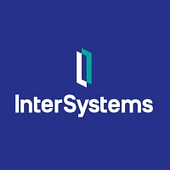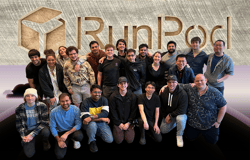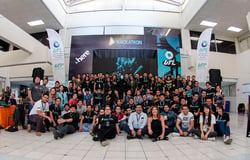NVIDIA is seeking a Senior Design Verification Engineer to verify the design and implementation of the next generation of High Speed I/O controllers for the world’s leading SOCs and GPUs. This position offers the opportunity to have real impact in a dynamic, technology-focused company impacting product lines ranging from consumer graphics to self-driving cars and the growing field of artificial intelligence. We have crafted a team of extraordinary people stretching around the globe, whose mission is to push the frontiers of what is possible today and define the platform for the future of computing. At NVIDIA, our employees are passionate about parallel and visual computing. We're united in our quest to transform the way graphics are used to solve some of the most complex problems in computer science.
The GPU started out as an engine for simulating human imagination, conjuring up the amazing virtual worlds of video games and Hollywood films. Today, NVIDIA’s GPU simulates human intelligence, running deep learning algorithms and acting as the brain of computers, robots, and self-driving cars that can perceive and understand the world. NVIDIA is increasingly known as “the AI computing company.”
What you’ll be doing:
-
Be responsible for the verification of ASIC design, architecture, golden models and micro-architecture of High Speed I/O controllers, like PCIE and NVLink, at IP/sub-system levels using advanced DV methodologies such as UVM.
-
Building reusable bus functional models, monitors, checkers and scoreboards following coverage driven verification methodology.
-
Understanding the design specification and implementation, defining the verification scope, developing test plans, tests, and the verification infrastructure used to verify the correctness of the design.
-
Collaborating with architects, designers, and pre and post silicon verification teams to accomplish your tasks.
What we need to see:
-
Bachelors or Masters Degree (or equivalent experience) with 5+ years of relevant experience
-
Experience at Unit/Sub-system/SOC level and expertise in Verilog and SystemVerilog
-
Expertise in comprehensive verification of IP or interconnect protocols (e.g. PCI Express, USB, SATA)
-
Experience in verification using random stimulus along with functional coverage and assertion-based verification methodologies (UVM) and exposure to industry standard verification tools for simulation
-
Excellent debugging, analytical, and problem solving skills
-
Great communication and collaboration skills to interact within the team and across functional teams
Ways to stand out from the crowd:
-
Excellent knowledge of PCIE protocol - Gen3 and above
-
Good understanding of the system level architecture of HSIO-based designs, like PCIE or CXL
-
Experience with Perl, Python or similar scripting and/or SW programming languages is highly desirable
NVIDIA is widely considered to be one of the technology world’s most desirable employers. We have some of the most forward-thinking and hardworking people in the world at NVIDIA. Are you a creative and autonomous engineer who loves a challenge? Join our HSIO Verification team and help us build future interconnect architectures that will continue to drive us forward in the fields of High Performance Computing, Graphics and AI.
The base salary range is 136,000 USD - 264,500 USD. Your base salary will be determined based on your location, experience, and the pay of employees in similar positions.
You will also be eligible for equity and benefits. NVIDIA accepts applications on an ongoing basis.
NVIDIA is committed to fostering a diverse work environment and proud to be an equal opportunity employer. As we highly value diversity in our current and future employees, we do not discriminate (including in our hiring and promotion practices) on the basis of race, religion, color, national origin, gender, gender expression, sexual orientation, age, marital status, veteran status, disability status or any other characteristic protected by law.
Top Skills
What We Do
NVIDIA’s invention of the GPU in 1999 sparked the growth of the PC gaming market, redefined modern computer graphics, and revolutionized parallel computing. More recently, GPU deep learning ignited modern AI — the next era of computing — with the GPU acting as the brain of computers, robots, and self-driving cars that can perceive and understand the world. Today, NVIDIA is increasingly known as “the AI computing company.”










